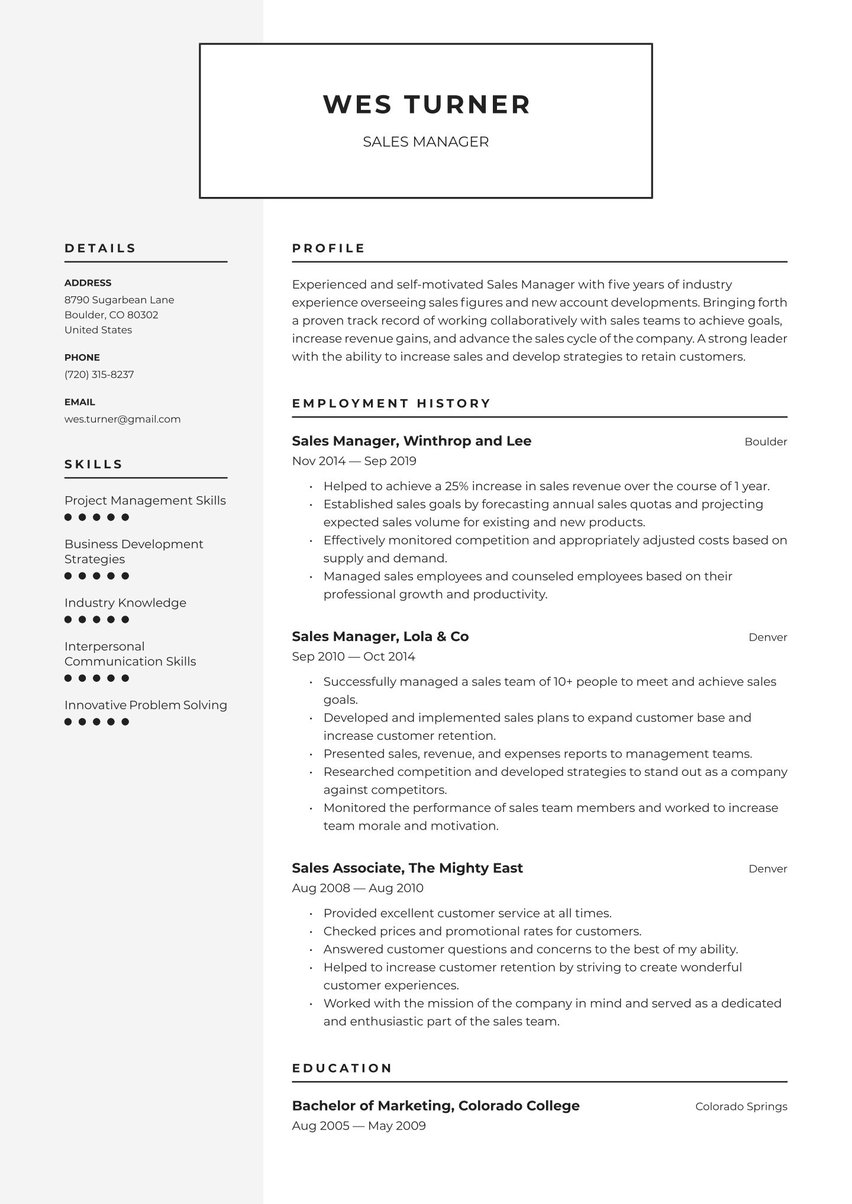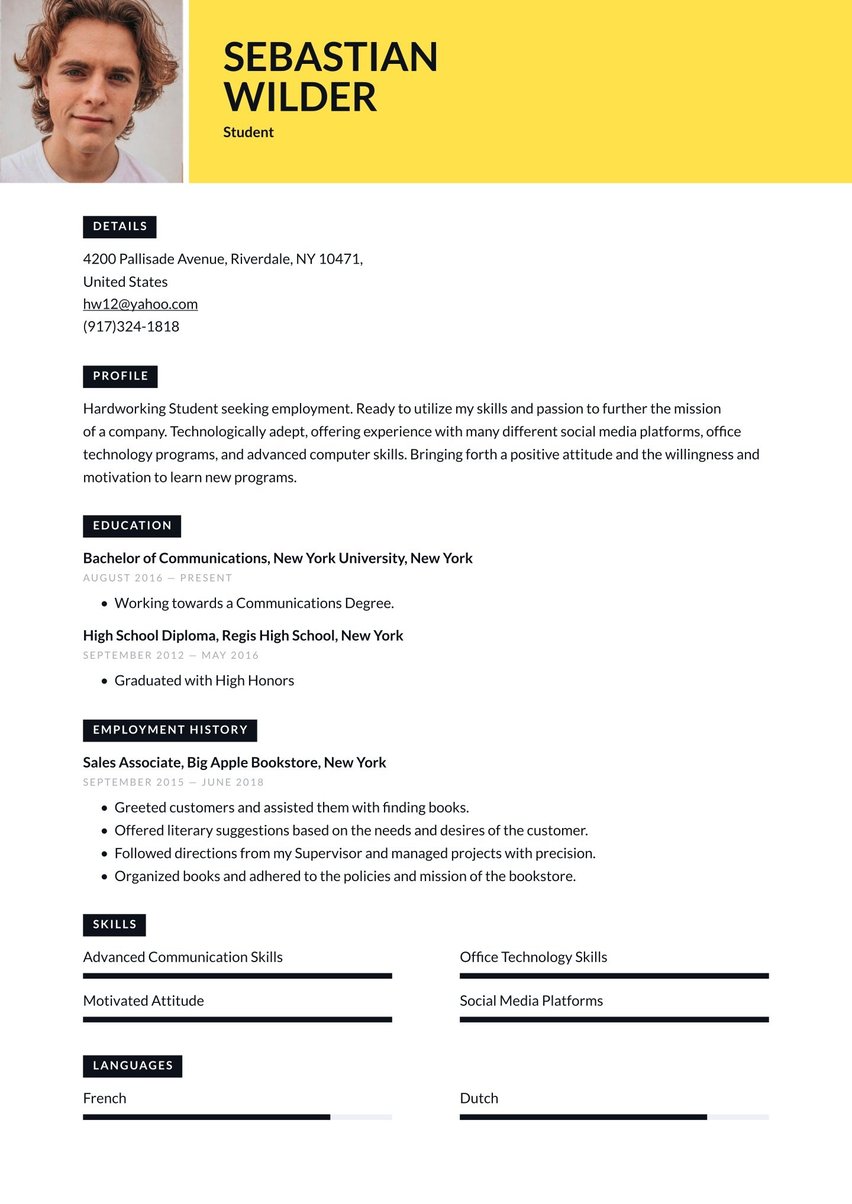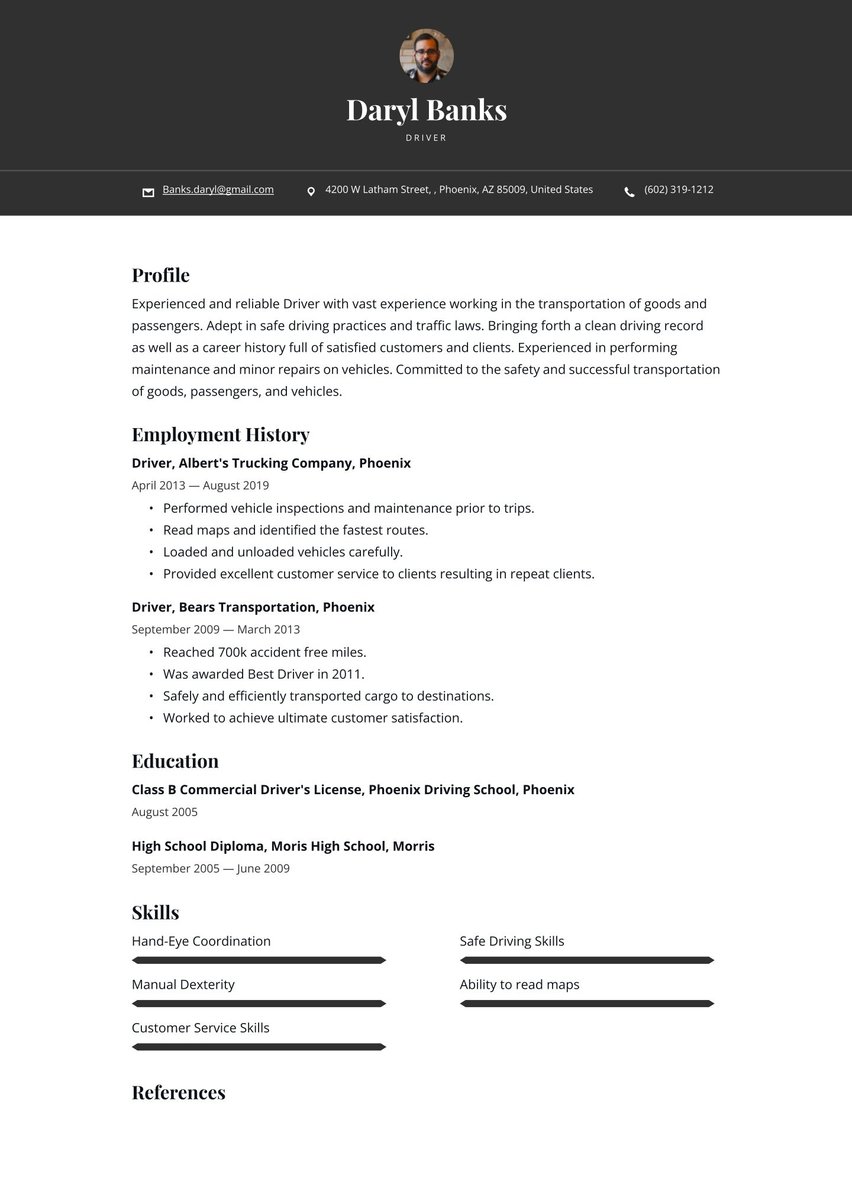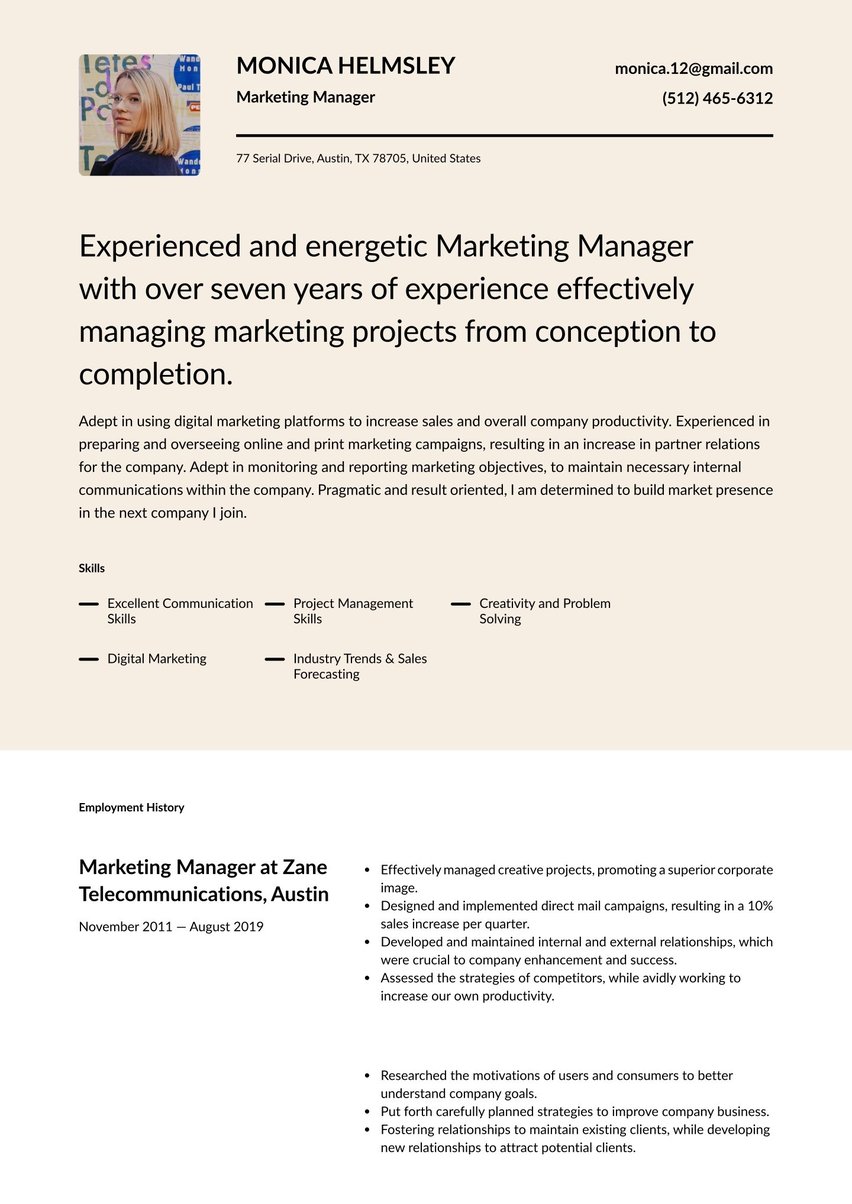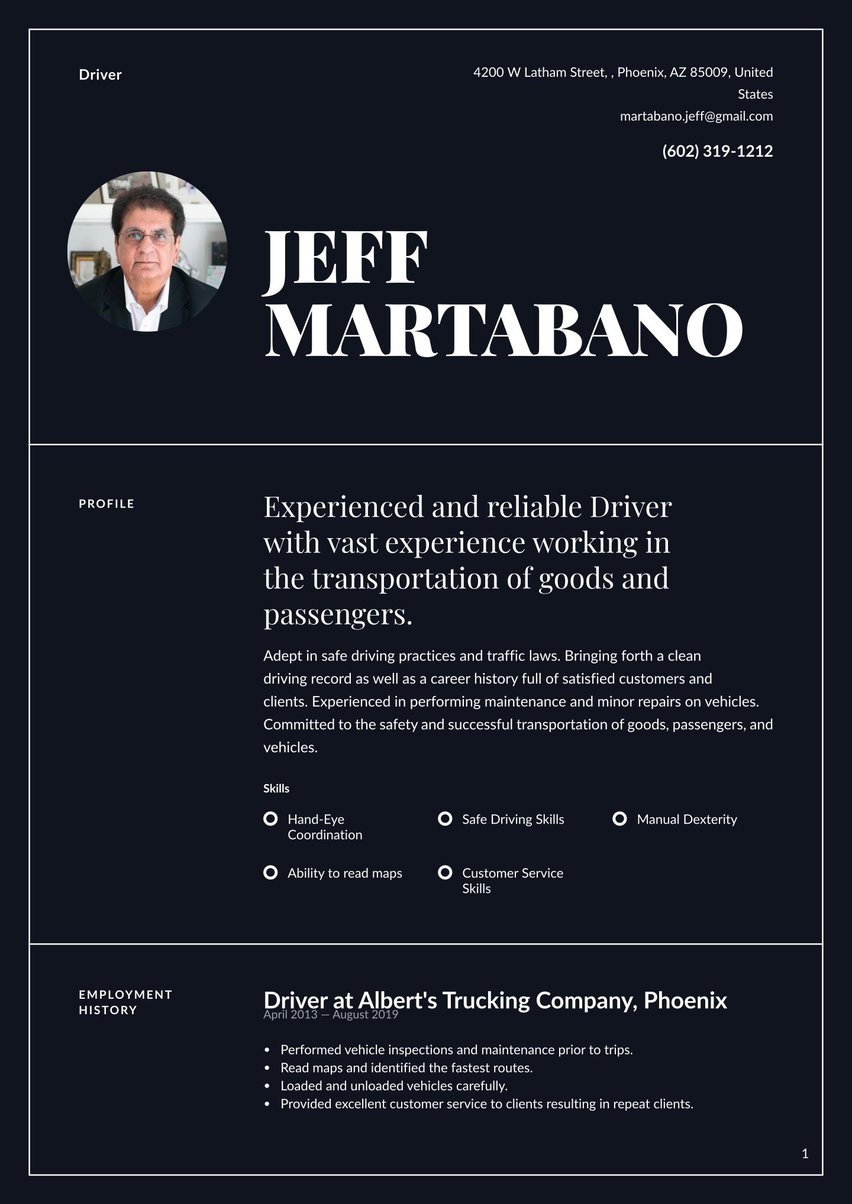Professional and experienced Personal Assistant with a proven track record of providing optimal support and assistance to career professionals. Adept in maintaining high levels of organization, while effectively prioritizing tasks. Driven, goal-oriented, and committed to exceeding expectations.
02/2017 - 03/2021, Personal Assistant, Drive 36, New York
- Maintained a highly-organized and efficient documentation system.
- Planned and distributed event calendars.
- Handled travel arrangements and accommodations.
- Distributed quarterly office updates.
- Liaised across departments to ensure seamless scheduling.
- Efficiently handled time-sensitive and confidential documents.
- Exercised excellent judgment, and sought to provide the highest level of support at all times.
10/2015 - 01/2017, Personal Assistant, The Landry, New York
- Developed new and efficient document filing practices.
- Handled all email and phone correspondence.
- Effectively managed a broad range of responsibilities.
- Maintained stock of general office supplies and created new orders when it was deemed necessary.
- Organized and facilitated meetings and private functions.
- Handled travel arrangements including flight, car, and stay details.
- Worked with meticulous attention to detail.
09/2014 - 05/2016, Associate of Marketing, Westchester Community College, Valhalla
09/2012 - 05/2014, High School Diploma, Valhalla High School, Valhalla
- English
- Spanish; Castilian
- German
- Fast Learner
- Ability to Multitask
- Ability to Work Under Pressure
- Effective Time Management
- Interpersonal Communication
- Knowledge of Office Technology
A personal assistant is the indispensable right arm of a company executive, providing administrative support, scheduling meetings, booking travel, organizing calendars, answering the phone, managing budgets, and oh-so-much more.
If you're the perfect candidate, you need to get your message across in a one-page document. Here at Resume.io, we have you covered. We provide expert-backed resume writing guides and resume examples for 350+ professions to inspire your journey.
Personal Assistant resume examples by experience level
This guide is designed to help you create a standout personal assistant resume that will make a busy boss stop everything and say, “Wow, I need this person now." Here's a quick rundown of what we’ll cover:
- What does a personal assistant do?
- Salary and job outlook for personal assistants
- How to write a personal assistant resume
- Design choices for a winning personal assistant resume
- Model resume examples to adapt as your own.
What does a personal assistant do?
Personal assistants provide vital support to executives and other top-level managers at all kinds of enterprises. A CEO is a busy person, and there are certain things they have to do in person, like addressing the board of directors, providing strategic guidance to the top management team, or perhaps meeting with multimillion-dollar clients who expect personalized attention from the very top.
But that leaves a lot of responsibilities that this person can delegate to someone else, and that’s where the personal assistant comes in.
Executives who travel frequently usually rely on a trusted assistant to book their flights, hotel rooms and on-the-ground transportation. They may rely on this assistant to keep their calendars organized so they know where they have to be when, without the faux pas of a double booking. If they want to meet with all their senior staff, but they don’t want to spend an hour responding to emails about conflicts on other people’s schedules, they will ask an assistant to arrange the meeting.
And if they’re hosting a summit of top executives from another company to discuss a merger, they’re not just going to leave all those people sitting around while they personally step out to fetch them all a cup of coffee.
Many years ago, personal assistants used to be called secretaries (and many, many years ago, they all used to be men). In the past few decades, the word “secretaries” has fallen out of favor in many industries, and they’ve come to be known as administrative assistants, executive assistants or personal assistants.
Their roles have also changed with advances in technology. For example, while shorthand was once an essential skill for a secretary to “take a letter,” most executives today are perfectly capable of writing their own emails.
Bosses with trusted assistants will sometimes introduce that person by saying, “She basically runs the place.”
Salary and job outlook for personal assistants
According to the U.S. Bureau of Labor Statistics (BLS), all secretaries and administrative assistants earn a median annual wage of $45,760. However, “executive secretaries and executive assistants” — which better describe personal assistants — earn a median annual salary of $60,060.
However, the jury's out on how much you will make in real terms. Another source, Payscale.com, says personal executive assistants earn an average base salary of $65,000. And Salary.com puts the median number for executive personal assistants at $70,260.
Job outlook for secretaries and administrative assistants
The employment of secretaries and administrative assistants is expected to decline between 2021 and 2031 by around 8%. That is largely due to technological advances and many of the everyday office admin tasks being computer automated.
However, armed with the right set of special skills, you can still scope out an illustrious career in this sector. Why not look at diversifying your skill-set to keep up?
How to write a personal assistant resume
Detail-oriented, organized, presentable — most of the qualities that describe a good personal assistant also apply to a good personal assistant resume. To get started, you need to follow this simple structure:
- The resume header
- The resume summary (aka profile or personal statement)
- The employment history section
- The resume skills section
- The education section
An executive who is more or less looking for a personal assistant to “run his life” (or hers) is not going to be impressed by a sloppy presentation, vague generalities or a haphazard approach in a resume. Executives are looking for a buttoned-mind to act not only as their helper but at times as their representative, so they want to see solid professionalism at its most impressive in your resume.
Your personal assistant resume needs to be just one page. How hard can that be for someone accustomed to processing hundreds of pages of spreadsheets, emails, calendars and budgets? By following the above layout, you can convey your skills and experience.
Looking for some design inspiration? Take a look at our related resume samples to whet your appetite. Here are some similar applications that you should check out:
Choosing the best resume format for a personal assistant
The choice of resume format for a personal assistant will come down to one of three scenarios:
- Your past work experience is the focus of your resume
- Your skill list is your main point of pride
- Both are equally important.
At the start of your career, you may lean more towards showcasing your skills, in which case the functional resume format may be your best choice. However, for most other stages of your career, the reverse chronological format will be optimal, since it focuses on your past jobs as proof of competence. This resume format highlights your work experience as the biggest resume section with the largest amount of words and bullet points.
A personal assistant resume should look as good as it reads, so resume formatting and design are also important.
Resume.io has resume samples for a wide variety of occupations, including categories called Simple, Creative, Professional and Modern. You might want to lean toward the professional, which we describe as “job-winning templates to showcase professionalism, dependability and expertise.”
Resume header
A header is basically a “letterhead” — the attractively designed space at the top of the page that contains the sender’s name, occupation, address, phone number and email. See the attached resume example.
In addition to letting employers know how to contact you if interested, the header gives your resume an eye-catching look and sets the tone for its overall look and feel.
Resume summary example
A resume is mostly a collection of lists — of the various ways to contact you, of your past jobs, of your past schools and of your skills — but the summary is one exception.
The resume summary, also known as a profile, personal statement or job objective, consists of three or four lines under the header where you tell employers about yourself and your job aspirations in your own words.
“Exceptionally organized, highly professional personal assistant seeking a challenging role supporting a senior executive at a top technology company.” That wouldn’t be a bad start. Depending on the company you’re targeting, you could customize this by saying “… supporting senior Google executives,” “… supporting senior Apple executives,” etc.
As this is a bit short, you could add a second line that says, “Fast, accurate and efficient, with broad experience in managing every aspect of managerial scheduling, travel, calendars and budgets, from the CEO level down.”
What boss wouldn’t want to talk to you?? Notice that these two lines do not repeat any major words — and not one of the words is “flabby” or “fluffy.” Hone your summary so that it contains the most enticing language possible, and so that none of this precious space is wasted. This is your best opportunity to tell prospective employers what you have to offer them, so give it some careful thought.
Here’s one example of a good profile/summary for a personal assistant:
Professional and experienced Personal Assistant with a proven track record of providing optimal support and assistance to career professionals. Adept in maintaining high levels of organization, while effectively prioritizing tasks. Driven, goal-oriented, and committed to exceeding expectations.
Pass the ATS test
Applicant Tracking Systems (ATS) are computer applications that save hiring managers time by doing a first review of resumes, checking to see whether they mention any of the qualifications needed for the job.
For example, if ExxonMobil advertises that it’s looking for a personal assistant to the CEO, it’s going to get a LOT of applications — perhaps thousands. Who wants to read all those? To make this task manageable, the company will probably tell its ATS software that it’s looking for resumes that contain the words “personal assistant,” or variants of those words like “executive assistant” or “executive administrative assistant.”
When the resumes roll in, they’re fed into the ATS system, and if they don’t contain any of the words mentioned above, the ATS will send them straight to the reject pile, and a hiring manager will probably never bother to review them.
It’s actually a bit more complicated than this, as several other critical keywords may be fed into the ATS to further filter resumes for relevance. The best way to make an educated guess about what the ATS may be looking for is to scrutinize the job listing itself for the precise words and phrases it contains. As much as possible, use the exact same words in the job description to tailor and optimize your resume for each job application.
Employment history sample
The resume section describing your work experience (also known as employment experience) is arguably the most important. Bosses are looking for personal assistants who are ready to hit the ground running on day one, without a lot of hand-holding or explanation about what the job entails.
So in a perfect world, you already have some experience doing this job (but see below in case you don’t).
List the current and previous jobs you’ve held in reverse chronological order (last job first), naming the company, location and the years you worked there. Then sink the hook with bullet points below each one describing what you actually did there. Be specific, citing facts and figures wherever possible, and use strong action verbs to describe what you actually accomplished and achieved in these roles. (In other words, don’t just say “Was responsible for …” but describe things you actually did.)
Here’s a resume example of the work experience section for a personal assistant:
Personal Assistant, Drive 36, New York
February 2017 - Present
- Maintained a highly-organized and efficient documentation system.
- Planned and distributed event calendars.
- Handled travel arrangements and accommodations.
- Distributed quarterly off ice updates.
- Liaised across departments to ensure seamless scheduling.
- Efficiently handled time-sensitive and confidential documents.
- Exercised excellent judgment, and sought to provide the highest level of
- support at all times.
Personal Assistant, The Landry, New York
October 2015 - January 2017
- Developed new and efficient document filing practices.
- Handled all email and phone correspondence.
- Effectively managed a broad range of responsibilities.
- Maintained stock of general office supplies and created new orders when it
- was deemed necessary.
- Organized and facilitated meetings and private functions.
- Handled travel arrangements including flight, car, and stay details.
- Worked with meticulous attention to detail.
Resume skills example
You need a short section on your resume that lists six to 10 of your most relevant skills. These should be a combination of hard and soft skills. Hard skills include technical capabilities, like mastery of the Microsoft Office suite (Word, Excel, PowerPoint), or the ability to type 75 words per minute. Soft skills are more like people-related talents, indicating the ability to work well with others and good communication skills.
Brainstorm a master list of all resume skills. These are your “superpowers” — all the things you’re good at that might be relevant to the job you want. You can make it longer than it needs to be, but save the list for future reference.
Then, as you consider personal assistant jobs that interest you, study the job listings closely to see what the employer is looking for. The skills section of your resume is an excellent place to optimize your resume for the ATS gatekeeper. If the boss is looking for someone who is “highly-organized,” put “highly-organized” on your resume! This is not rocket science. But it works.
Here’s a resume sample of a good skills section for a personal assistant:
- Fast Learner Ability to Multitask
- Ability to Work Under Pressure
- Effective Time Management
- Interpersonal Communication
- Knowledge of Office Technology
Personal assistant resume education example
While it certainly helps, you don’t necessarily need a college education to become a personal assistant. High school graduates with demonstrable skills in word processing, spreadsheets and other computer skills can step into a job like this, especially if they have any special training or certifications from community colleges or technical schools.
List your highest level of education attainment first. Name the school you attended, say where it’s located and mention the years you attended (or graduated). If you do have a 4-year bachelor’s degree, it’s not necessary to name your high school, though it doesn’t do any harm.
Don’t forget to include any certifications or college coursework that have prepared you for the role you’re seeking.
Here’s how to write the education section of a personal assistant resume example:
Associate of Marketing, Westchester Community College, Valhalla
September 2014 - May 2016
High School Diploma, Valhalla High School, Valhalla
September 2012 - May 2014
Personal assistant resume with no experience
You might think it’s impossible to get a personal assistant job with no experience. But just remember that EVERY personal assistant got their first job with no experience.
Experience that’s related, though not identical, is still relevant. If you’ve worked in any role as an office secretary, office assistant or the like, you’re in the ballpark. Any employment history that requires a high level of organization, efficiency and human interaction may be relevant as well. So play up the jobs you’ve held that are similar, and in the bullet points under them, stress the experience that has prepared you to be the right arm of the big boss.
You may have a short employment history because you’re still in college. If your education is relevant to the role (business administration, for example), play this up, and consider putting the education section before the work history section on your resume. Also, don’t overlook any internships or even unpaid volunteer work that have prepared you to become an ace personal assistant.
Resume layout and design
Recruiters, CEOs, and executives all have one thing in common. They don't have time to spare. Your personal assistant resume needs to make a big impact the moment they see it.
To get the job done, make sure that your document is clear and easy to read. Choose no more than two font styles — one serif and one sans serif — for the resume. You should also use color sparingly. There's nothing wrong with showing off your creativity with a splash of color. However, too many tones could lead the document looking chaotic, to say the least.
Take the hassle out of designing your application with our field-tested resume templates. You’ll sidestep a lot of potential design flaws, save yourself a lot of time, and end up with a resume that’s been proven to work.
Personal Assistant text-only resume example
Profile
Professional and experienced Personal Assistant with a proven track record of providing optimal support and assistance to career professionals. Adept in maintaining high levels of organization, while effectively prioritizing tasks. Driven, goal-oriented, and committed to exceeding expectations.
Employment history
Personal Assistant, Drive 36, New York
February 2017 - Present
- Maintained a highly-organized and efficient documentation system.
- Planned and distributed event calendars.
- Handled travel arrangements and accommodations.
- Distributed quarterly off ice updates.
- Liaised across departments to ensure seamless scheduling.
- Efficiently handled time-sensitive and confidential documents.
- Exercised excellent judgment, and sought to provide the highest level of
- support at all times.
Personal Assistant, The Landry, New York
October 2015 - January 2017
- Developed new and efficient document filing practices.
- Handled all email and phone correspondence.
- Effectively managed a broad range of responsibilities.
- Maintained stock of general office supplies and created new orders when it
- was deemed necessary.
- Organized and facilitated meetings and private functions.
- Handled travel arrangements including flight, car, and stay details.
- Worked with meticulous attention to detail.
Skills
- Fast Learner Ability to Multitask
- Ability to Work Under Pressure
- Effective Time Management
- Interpersonal Communication
- Knowledge of Office Technology
Education
Associate of Marketing, Westchester Community College, Valhalla
September 2014 - May 2016
High School Diploma, Valhalla High School, Valhalla
September 2012 - May 2014
Key takeaways
- Personal assistants play an important role in supporting company executives with administrative and other tasks, but the anticipated decline in job outlook means they need a superior job application to compete for a dwindling number of jobs.
- A personal assistant resume should be detail-oriented, organized and presentable — just like the candidate the boss is looking for.
- A personal assistant resume should follow a predetermined structure — header, profile, employment, education and skills.
- Every resume should be tailored and customized to match each job application and satisfy the electronic demands of the ATS gatekeeper.
- Find a resume format that reflects the professionalism of the job you’re seeking.


.jpg)

.jpg)

















